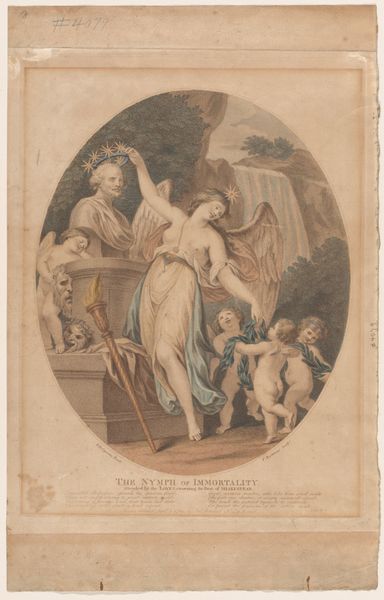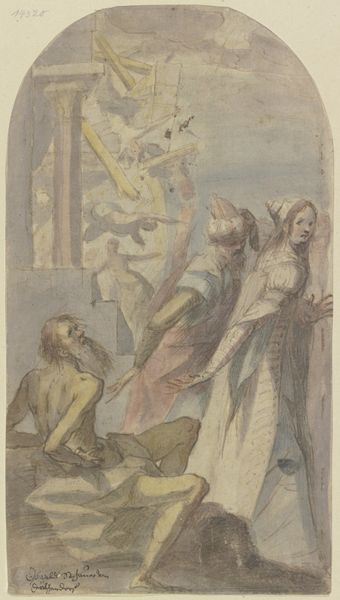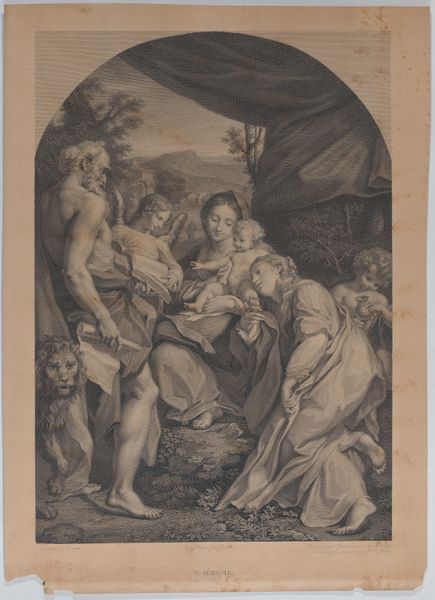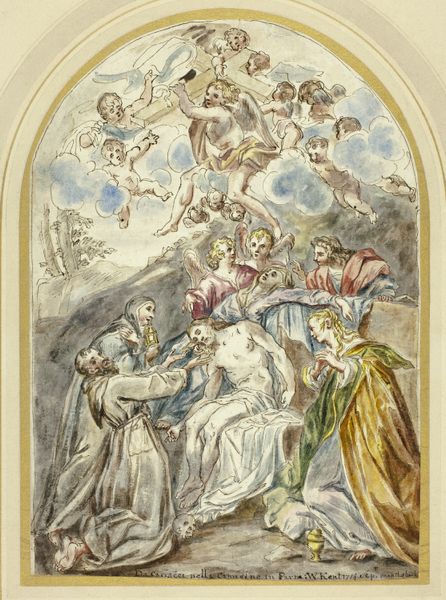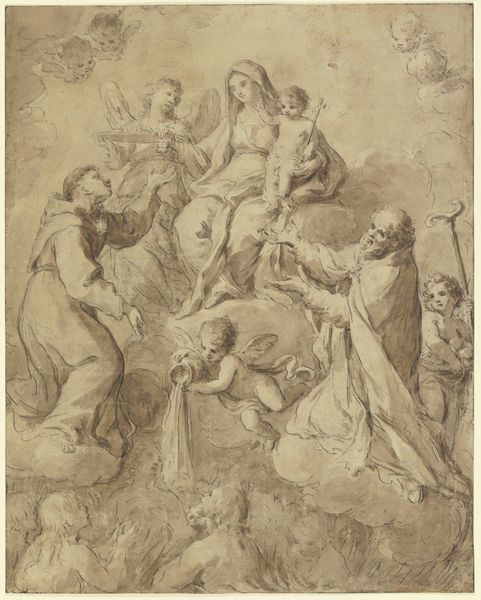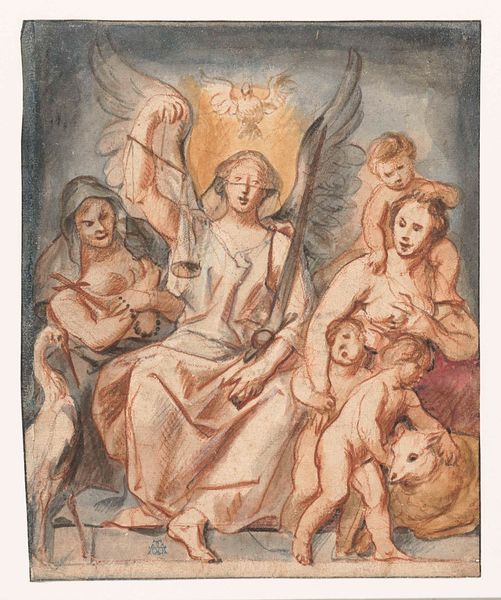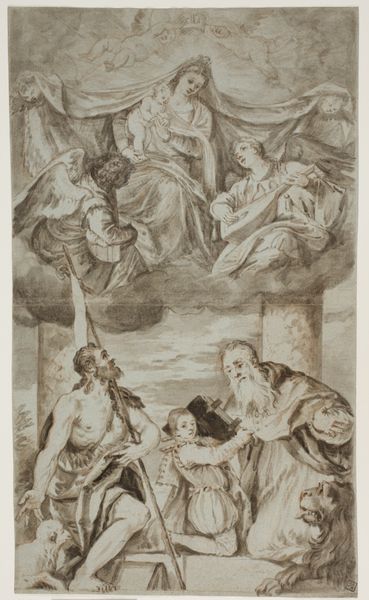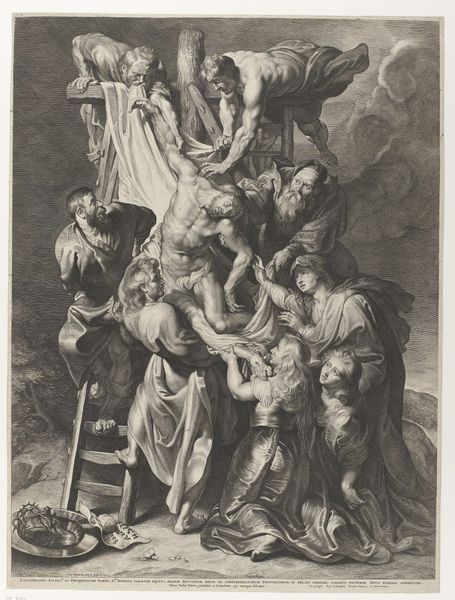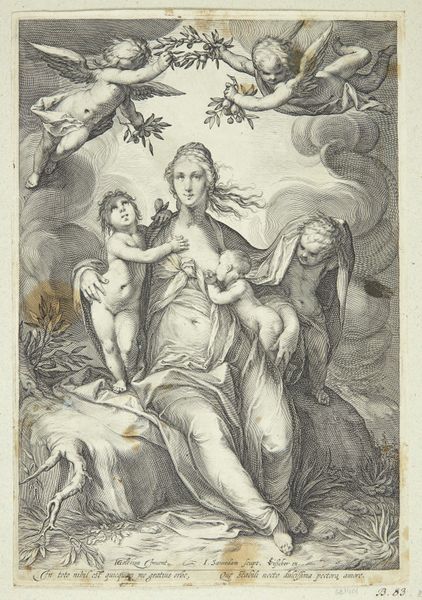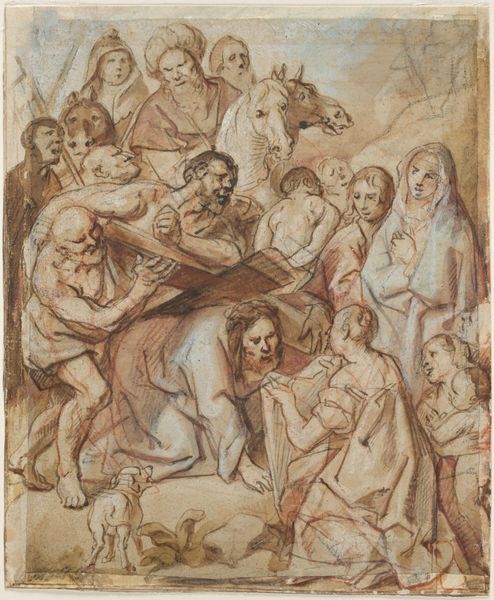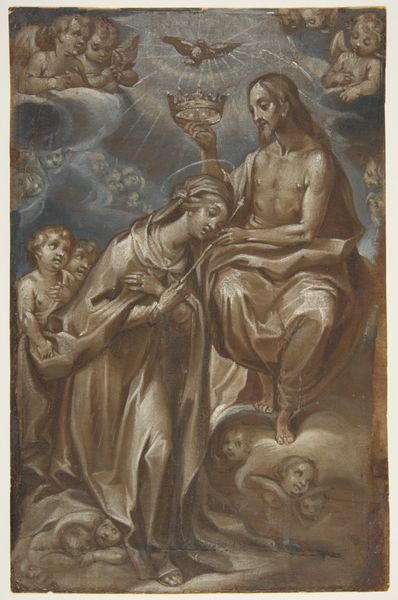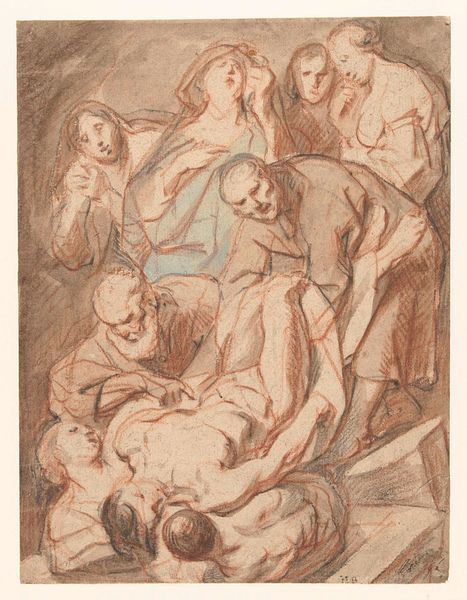
painting, watercolor
#
neoclacissism
#
narrative-art
#
painting
#
figuration
#
watercolor
#
coloured pencil
#
history-painting
#
watercolor
Dimensions: height 590 mm, width 442 mm
Copyright: Rijks Museum: Open Domain
Charles Howard Hodges created this aquatint print titled "Kruisafneming", likely in the late 18th or early 19th century. Aquatint is a printmaking technique that simulates the effects of watercolor, using acid to etch a tonal pattern on a metal plate. Hodges, active in the Netherlands, was known for his portraits and reproductions of older paintings. Here, the aquatint medium lends a soft, atmospheric quality to the emotionally charged scene of Christ's removal from the cross. The textured surface of the print, achieved through the careful application of resin and acid, mimics the subtle gradations of light and shadow found in paintings. Consider the labor involved: the artist's hand in preparing the plate, the repetitive action of printing, and the distribution of the image to a wider audience. This reproductive method allowed for broader access to religious imagery, extending its reach beyond the realm of unique, hand-painted artworks. Hodges's choice of aquatint democratized art, making it available to a growing middle class, thereby blurring the lines between traditional fine art and commercial printmaking.
Comments
No comments
Be the first to comment and join the conversation on the ultimate creative platform.
